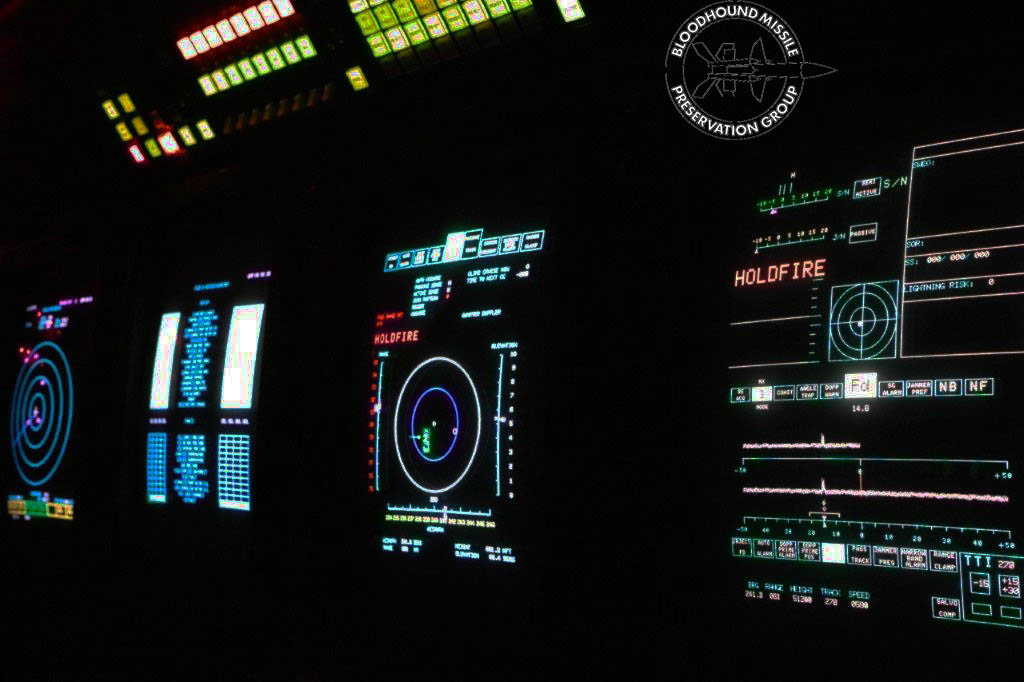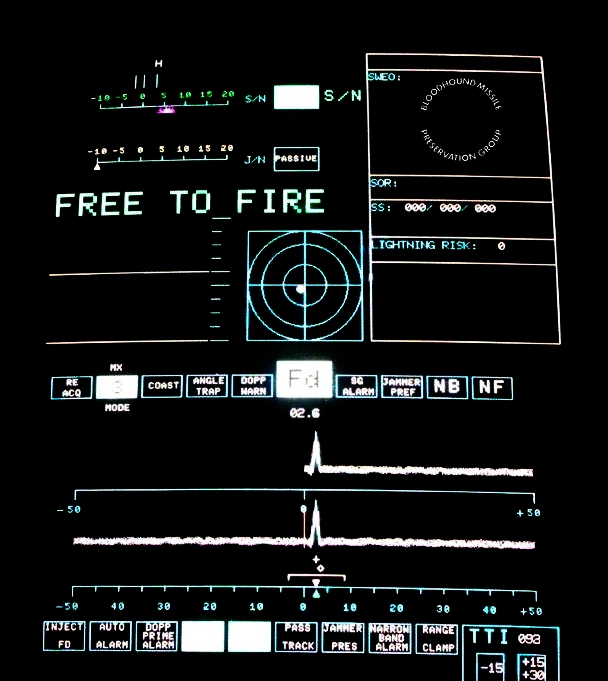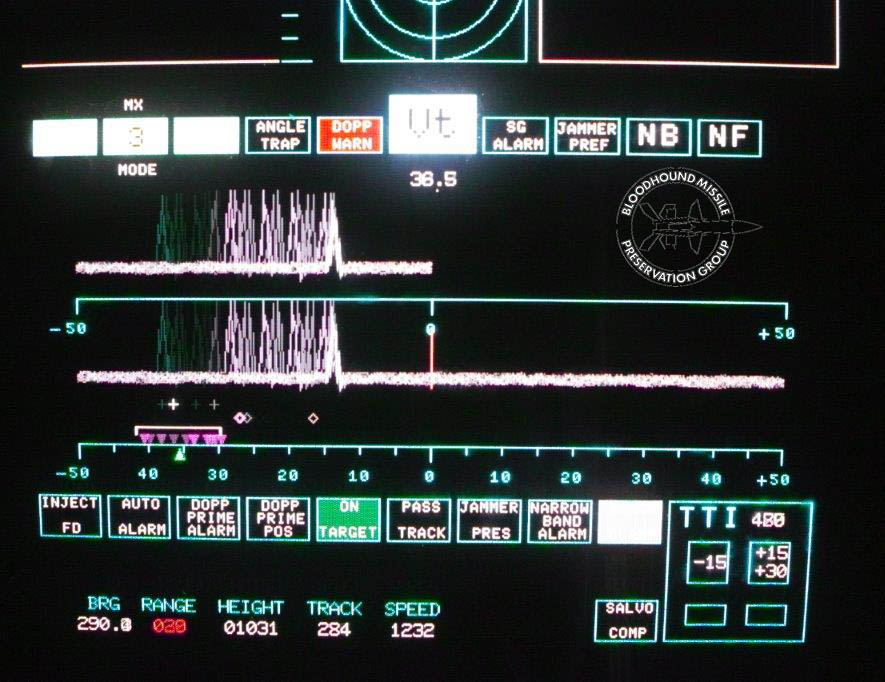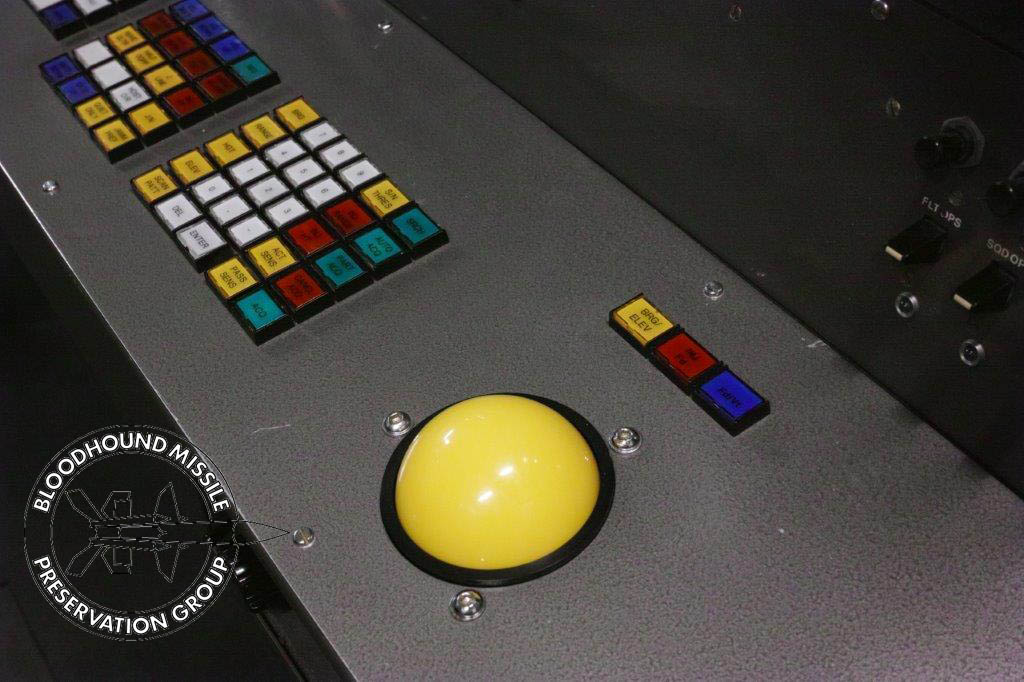Technical Supervisor's Display
The Run-up Fault Display indicates 8 missiles fully prepared and selected for firing. All missiles are fault free.
Radar tracking a non-jamming target. The Doppler frequency is quite low, so it's probably a crossing target. The jamming centre display is centred and the jamming history line is flat, which indicates that there is no offset jammer present on this engagement.
Engagement Controller's Display
The display shows a tracked target with the target vector indicating the current target position, track and predicted position at interception. The adjacent data block lists current bearing, range, height, track and speed.
This photo was taken shortly after a successful interception. The ghostly wideband noise is a signature of the warhead burst. The target doppler spike is widening and decelerating, indicating that the target is breaking up.










